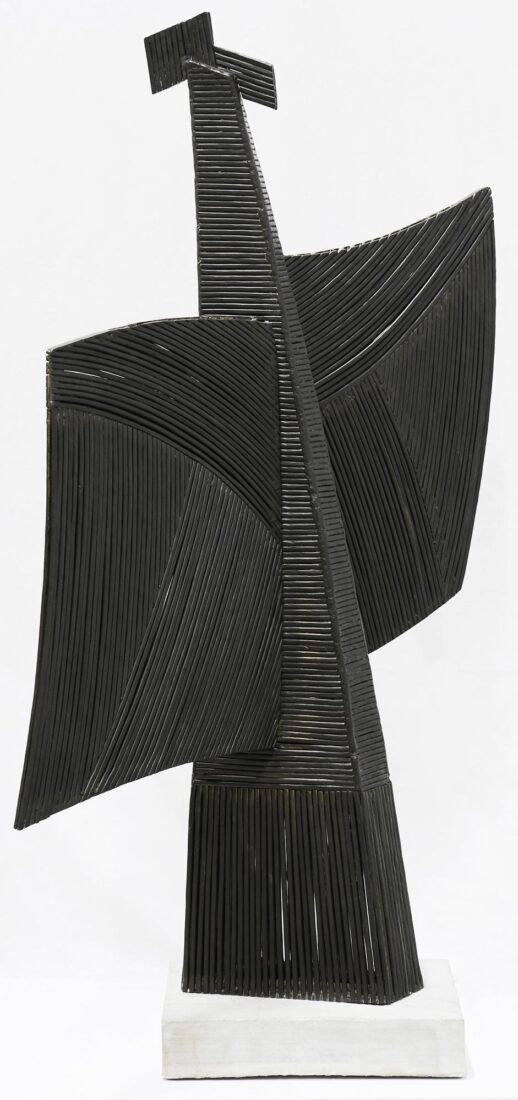We use cookies to make our site work properly, to personalize content and ads, to provide social media features and to analyze our traffic. We also share information about how you use our site with our social media, advertising and analytics partners. Read the Cookies Policy.

Efthymiadi-Menegaki Frosso (1911 - 1995)
Winged Chief, [1960]
Hammered brass, 116 x 75 x 23 cm
Frosso Efthymiadi-Menegaki Bequest
Efthymiadi’s engagement with bird forms spanned her entire career, resulting in series of stylised owls, roosters, and eagles in various sizes. Her dedication sprang from a belief that sculpture should be ‘an art that accompanies people in their everyday lives.’ However, in contrast to other thematic units, in which, until the early 1950s, she followed realistic rendering, the birds are characterized from the outset by an abstract mood and stylizations based on a variety of patterns.
These characteristics were strengthened after the mid-1950s. From 1960 onwards, inspired by Pre-Columbian metalworking techniques – characterised by the dense soldering of fine gold rods or wires – which she studied during a 1959 journey to Peru and Colombia, she began using hammered brass rods, welded together. In works such as “The Winged Chief”, her largest and one of the most iconic pieces in this style, she seeks to express energy and grandeur through the sudden flare of outstretched wings.
.

